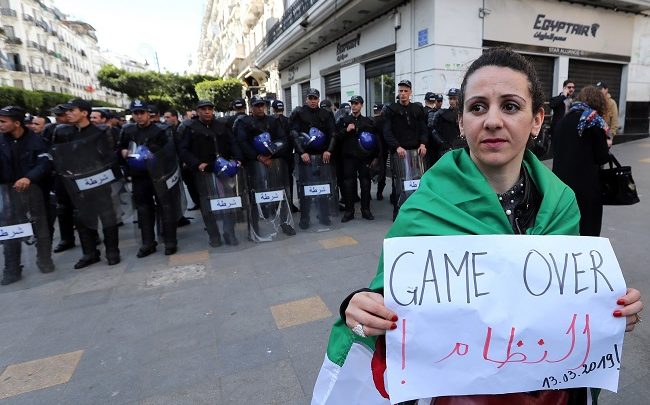
Understanding where democracy stands in the Muslim world
New Europe - Nicholas Waller, Managing Editor
In December 2010 a series of dramatic anti-government protests and uprisings became outright rebellions across the Middle East. In what later became known as “the Arab Spring”, those protests led many outside observers – most of whom were far from regional experts – to draw comparisons between the upheaval in the Middle East with the wave of pro-democracy revolutions that swept aside Soviet-led Communism in Eastern Europe in late 1989.
With the sole exception on Tunisia, however, those protests were largely unsuccessful due to a powerful counter-revolutionary backlash that took different forms depending on the country.
The rise of radical Islamist movements like the Muslim Brotherhood and its many regional offshoots, as well as Egypt’s Abdel Fatah el-Sisi led to bitter infighting amongst the region’s liberal opposition and exposed the Arab World’s lack of political acumen and ultimately doomed the Arab Spring nearly from the start.
The numerous counter-revolutionary forces that emerged in the wake of the 2010-2011 protests returned to power the sort of anti-democratic governments that had dominated the Middle East since the end of the Second World War.
By successfully crushing the Arab Spring’s democratic ambitions, both the Islamists and the region’s strongmen dictators, once again, quashed any attempt by reformists to fundamentally revitalise the Near East’s countless moribund economies or breathe new life into the political culture of countries who have suffered under the brutal weight of dynastic dictatorships and corrupt bureaucracies for most of their modern existence.
For those who had become familiar with the political and social dynamics of the Middle East, one of the main casualties in the post-Arab Spring landscape was the final deathblow to both the ideology of national liberation-style demagogues like Gamal Abdel Nasser and the Arab Socialist movements of Hafez Assad.
Those two strains of Arab political discourse, which had dominated the region for nearly half a century, were mortally wounded by the US’ disastrous invasion of Iraq in 2003. The sectarian bloodletting that followed in Iraq and the post-Arab Spring savagery of the Syrian Civil War – two nations that were once strongholds of rival Ba’athist ideologies – as well as the overthrow of two of the of 20th century’s archetypes for Middle East dictatorship, Libya’s Muammar Gaddafi and Zine El Abidine Ben Ali in Tunisia, was a definitive postscript for a particular era of modern Middle East history.
What has followed has been anything but a flowering of a truly democratic and pluralistic Middle East. Rather, the rise of Islamism in Syria and Iraq, a return to de-facto military rule in Egypt, and the outbreak of sectarian civil war in Yemen, Syria, Iraq, Libya has left the region in chaos, with little change of cultivating any semblance of a democratic process in the countries where stability and the growth of civil society are most needed.
This has posed a fundamental question as to where the Middle East is headed nearly a decade after undergoing the regions’ last major political upheaval first began.
Syed Kamall a centre-right European parliamentarian from the UK, says there is a need for “increased political, economic, and civic engagement” from the world’s Muslim nations if they hope to transition to becoming fully-fledged democracies sometime in the future.
Now, more than ever, Kamall says, the world’s leading and long-established democratic states need to come together to support the democratisation process in the Middle East and the wider Muslim world to help stem the tide of sectarian conflict and extremist politics that have swept across the region since the Arab Spring began.
Those examples, however, are often overshadowed by pessimistic sentiments that generally come from countries where democracy has been tried but whose population were left with a weak central government prone to infighting. This has left many regional experts asking themselves how they can encourage some of the Muslim nations to embrace democracy.
“As the leader of one of the largest political groups in the European Parliament and a Muslim, I see no inherent contradictions between Islam and liberal democracy…There are elements which criticise democracy as being anti-Islamic. Those of us, who are Muslim, have faced criticism for taking part in elections. Many Middle Eastern governments say that as long as they provide wealth, jobs, and food, people don’t care about elections or politics,” said Kamall.
Though authoritarian governments remain in the Middle East, Kamall noted that in other areas of the Muslim world, democratic elections and peaceful transfers of power have taken places in countries as diverse as Afghanistan, Indonesia, Malaysia, the Maldives, Pakistan, and Tunisia.
Nearly 10 years after the early heady days of the Arab Spring, the hope for the political future of the Muslim world is that the next decade presents an opportunity for the next generation of Muslim reformers to fulfil the democratic promise of their successors.





